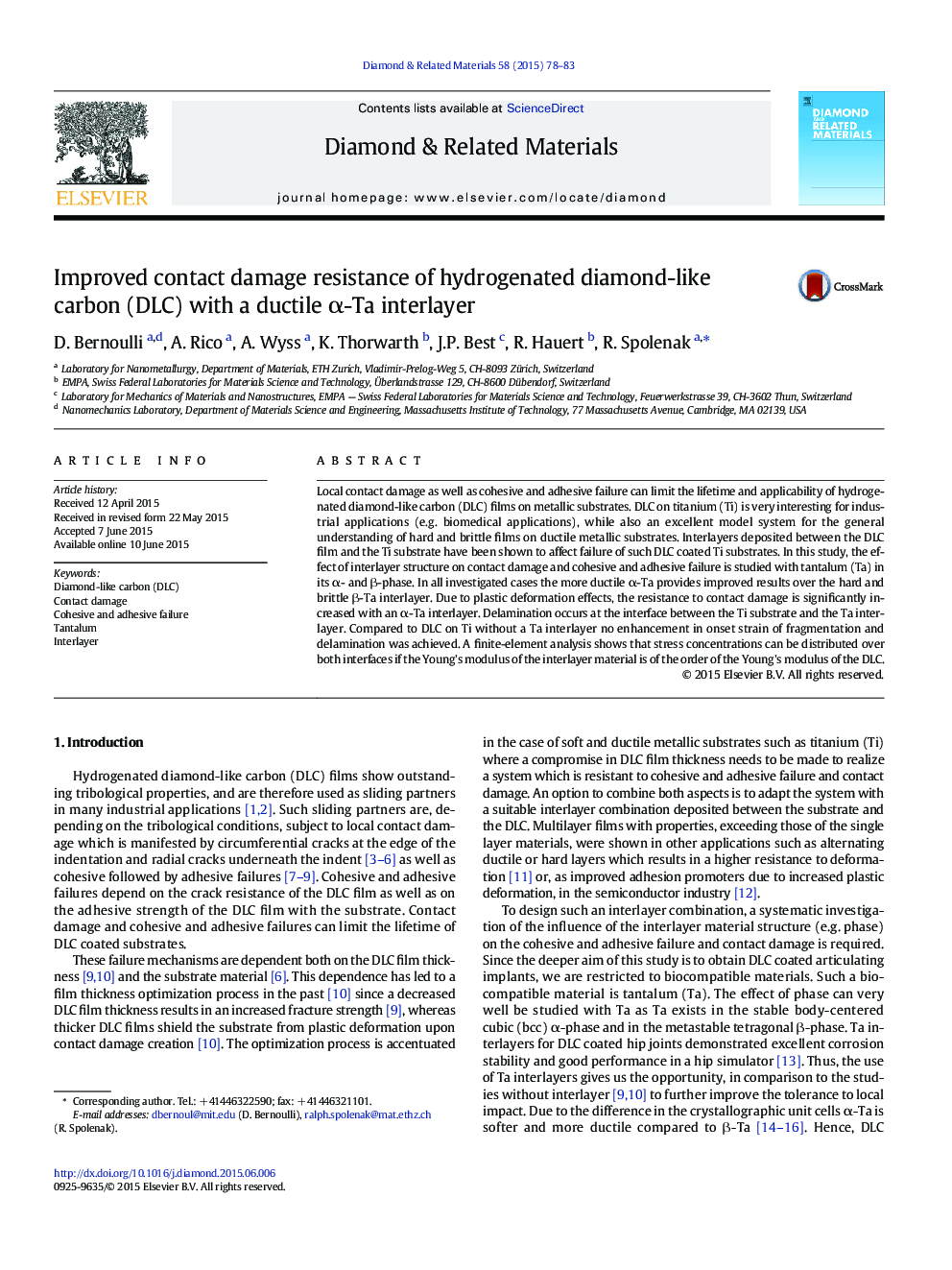| کد مقاله | کد نشریه | سال انتشار | مقاله انگلیسی | نسخه تمام متن |
|---|---|---|---|---|
| 702040 | 1460773 | 2015 | 6 صفحه PDF | دانلود رایگان |

• Ta interlayer structure affects mechanical failure of DLC coated Ti.
• α-Ta interlayer can stop advancing cracks upon loading.
• α-Ta interlayer reduces contact damage remarkably.
• Crack propagation in DLC depends on the ductility of the interlayer.
• Interlayer stiffness severely affects stress distribution upon indentation.
Local contact damage as well as cohesive and adhesive failure can limit the lifetime and applicability of hydrogenated diamond-like carbon (DLC) films on metallic substrates. DLC on titanium (Ti) is very interesting for industrial applications (e.g. biomedical applications), while also an excellent model system for the general understanding of hard and brittle films on ductile metallic substrates. Interlayers deposited between the DLC film and the Ti substrate have been shown to affect failure of such DLC coated Ti substrates. In this study, the effect of interlayer structure on contact damage and cohesive and adhesive failure is studied with tantalum (Ta) in its α- and β-phase. In all investigated cases the more ductile α-Ta provides improved results over the hard and brittle β-Ta interlayer. Due to plastic deformation effects, the resistance to contact damage is significantly increased with an α-Ta interlayer. Delamination occurs at the interface between the Ti substrate and the Ta interlayer. Compared to DLC on Ti without a Ta interlayer no enhancement in onset strain of fragmentation and delamination was achieved. A finite-element analysis shows that stress concentrations can be distributed over both interfaces if the Young's modulus of the interlayer material is of the order of the Young's modulus of the DLC.
Figure optionsDownload as PowerPoint slide
Journal: Diamond and Related Materials - Volume 58, September 2015, Pages 78–83